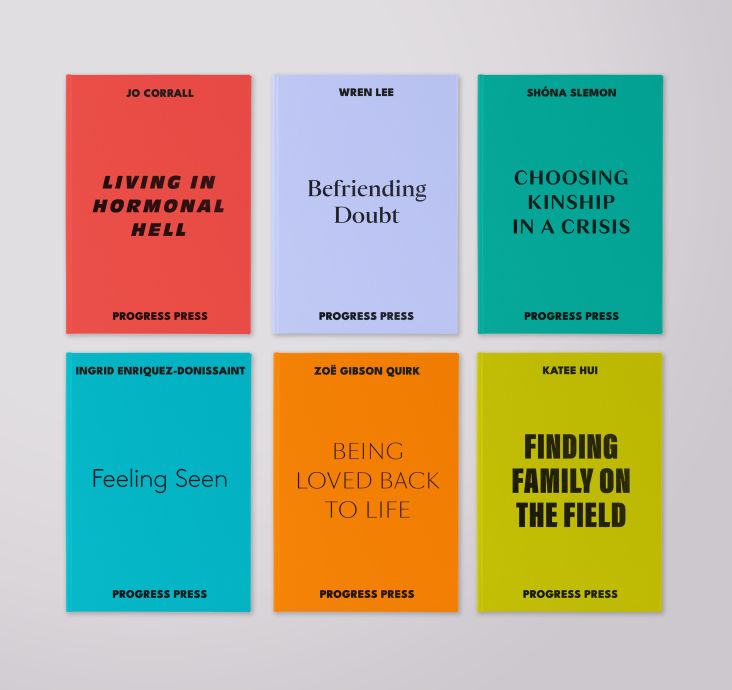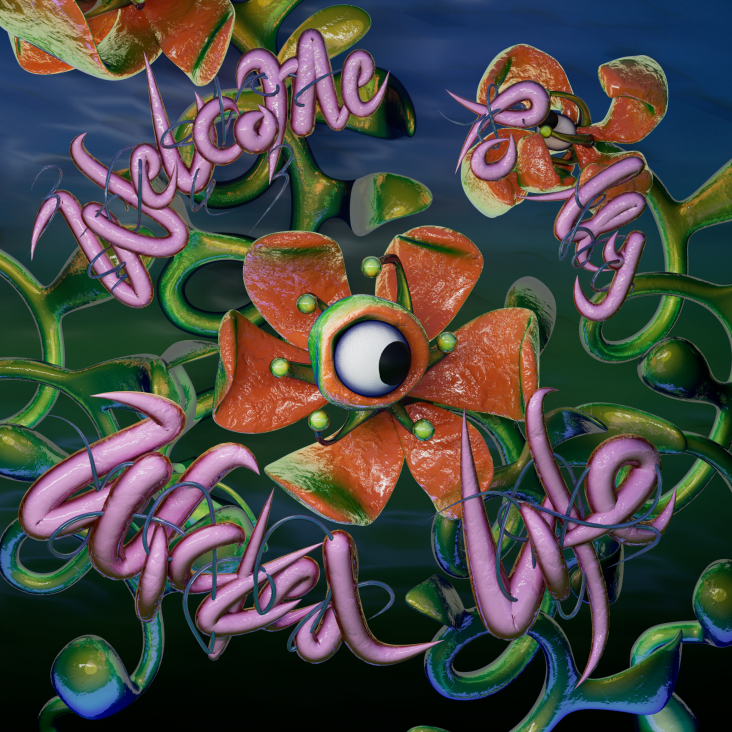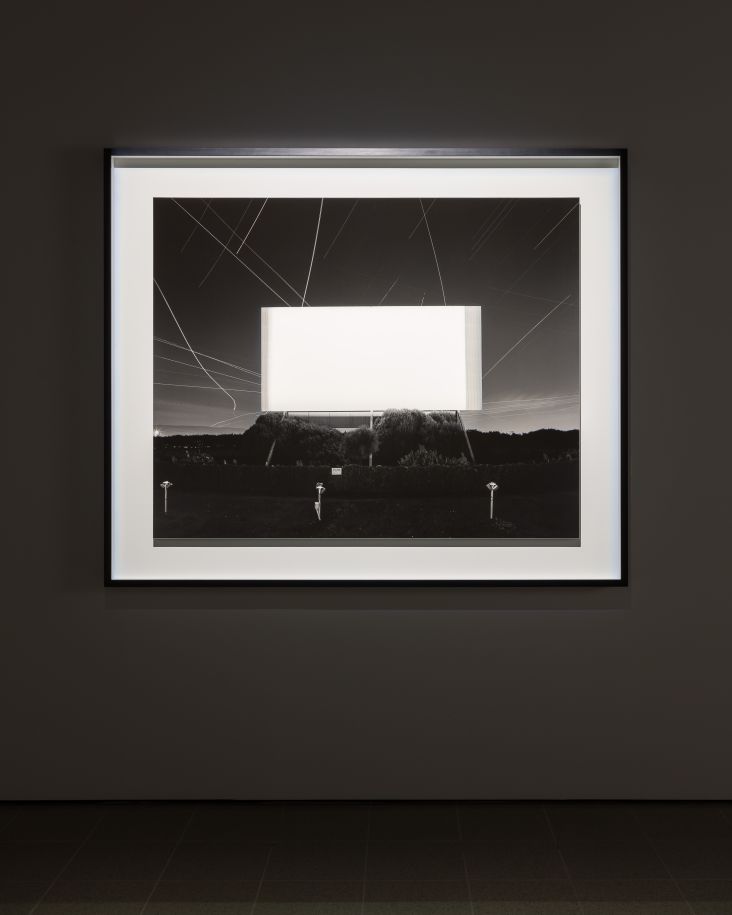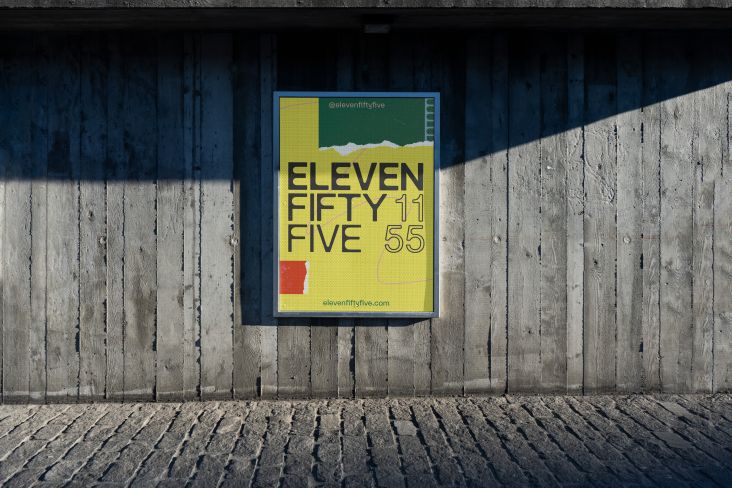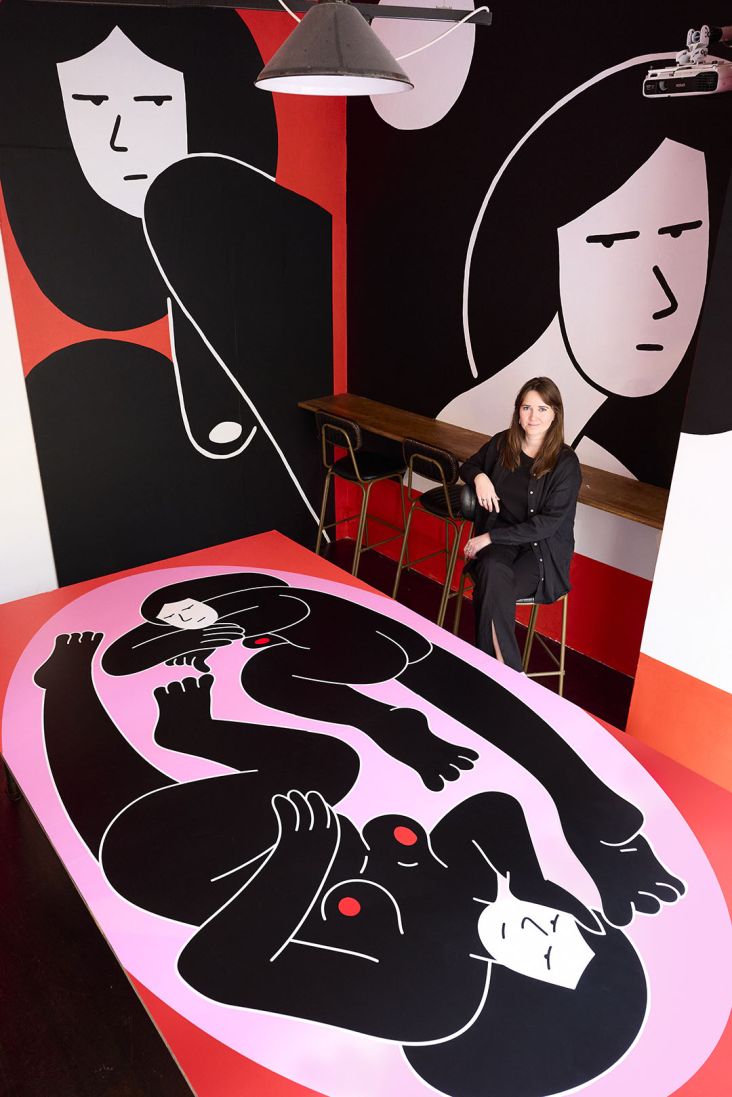El Anatsui's Turbine Hall hangings turn rubbish into treasure
The Ghanaian sculptor presents a triumphant Hyundai Commission at London's Tate Modern. We take a closer look at what's in store.
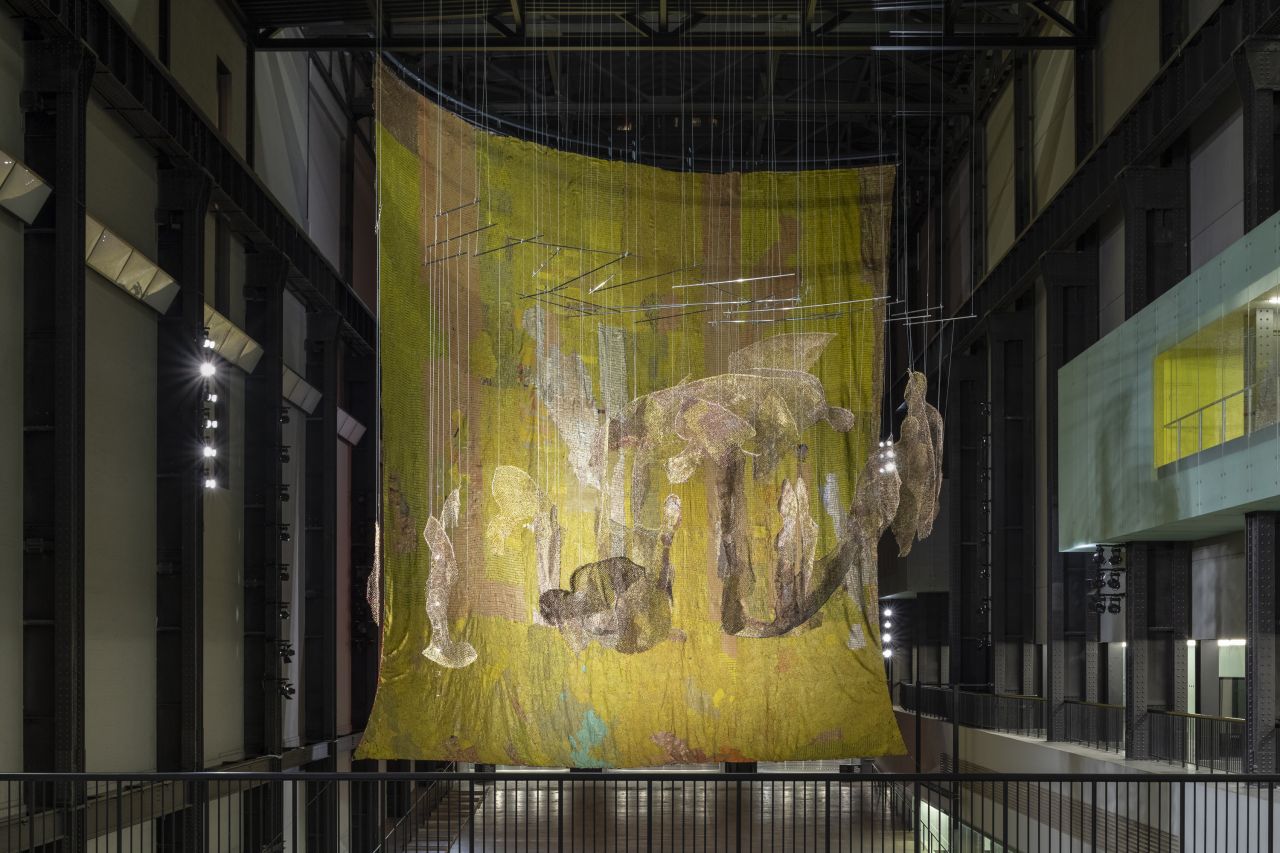
Hyundai Commission: El Anatsui: Behind the Red Moon , Installation View, Photo © Tate (Joe Humphrys)
Along the south bank of the Thames opposite St Paul's Cathedral, Tate's fourth gallery was opened by Queen Elizabeth II in May 2000. Immediately, what was so astounding was the sheer scale of the building. A former power station, the gargantuan hall where the turbines had stood, was turned by Swiss architects Herzog & De Meuron into the country's biggest exhibition space.
Over the past quarter century, the space has seen visitors lie on the ground, basking in the artificial sunlight of Olafur Eliasson's The Weather Project, or walking around millions of hand-painted sunflower seeds arranged by Ai Weiwei. The German synth pioneers Kraftwerk (the word meaning 'power station') staged a series of concerts there. First-time visitors ran for cover at the sound of breaking thunder and falling rain in Philippe Perrano's installation Anywhen – though they need not have bothered, the sound was recorded, and the space is indoors, despite the dizzying distance of the ceiling.
Who could forget Shibboleth, Doris Salcedo's giant crack in the floor? Carsten Holler's Test Site was an installation of slides, some several stories high, that, like a dry water park attraction, allowed attendees to shoot down the floors with childlike glee. Anish Kapor's Marsyas comprised crimson sculptural vortexes that genuinely filled the space in a way few other artists have managed to achieve. This is an issue addressed by El Anatsui's extraordinary installation Behind the Red Moon – a three-part hanging sculpture fashioned from uncountable bottle labels and daily detritus from his homeland, Ghana.
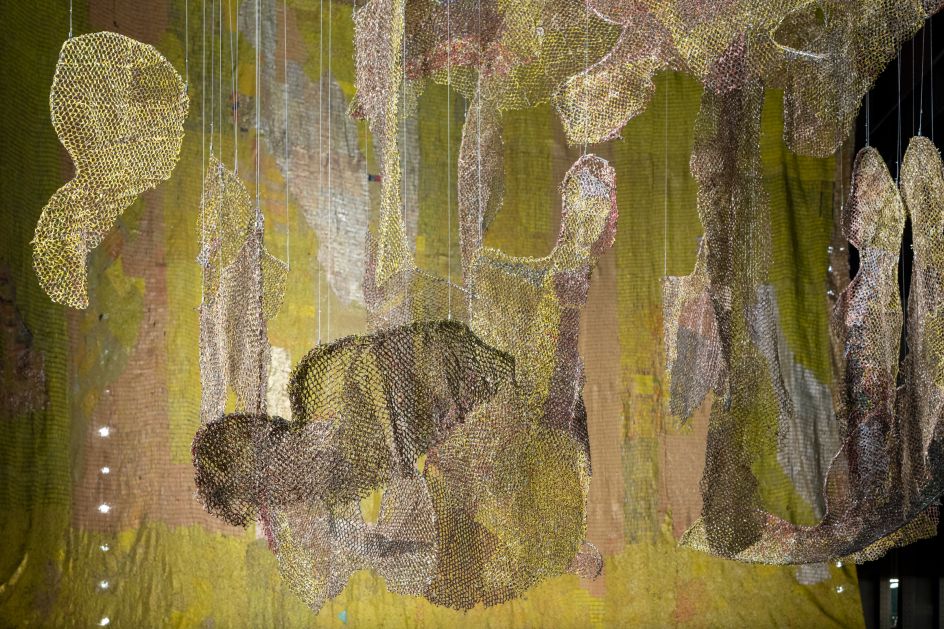
Hyundai Commission: El Anatsui: Behind the Red Moon , Installation View, Photo © Tate (Joe Humphrys)
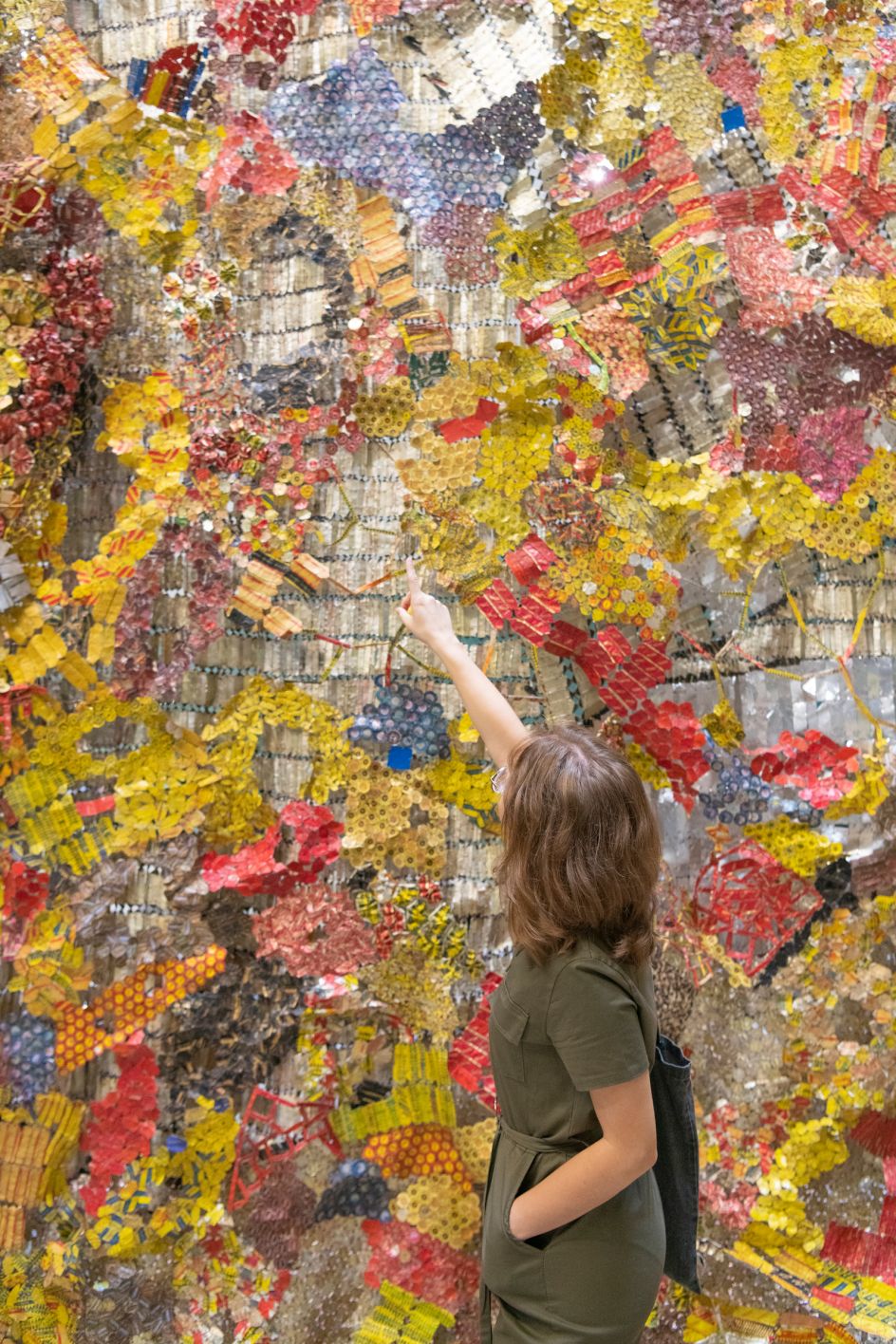
Hyundai Commission: El Anatsui: Behind the Red Moon , Installation View, Photo © Tate (Lucy Green)
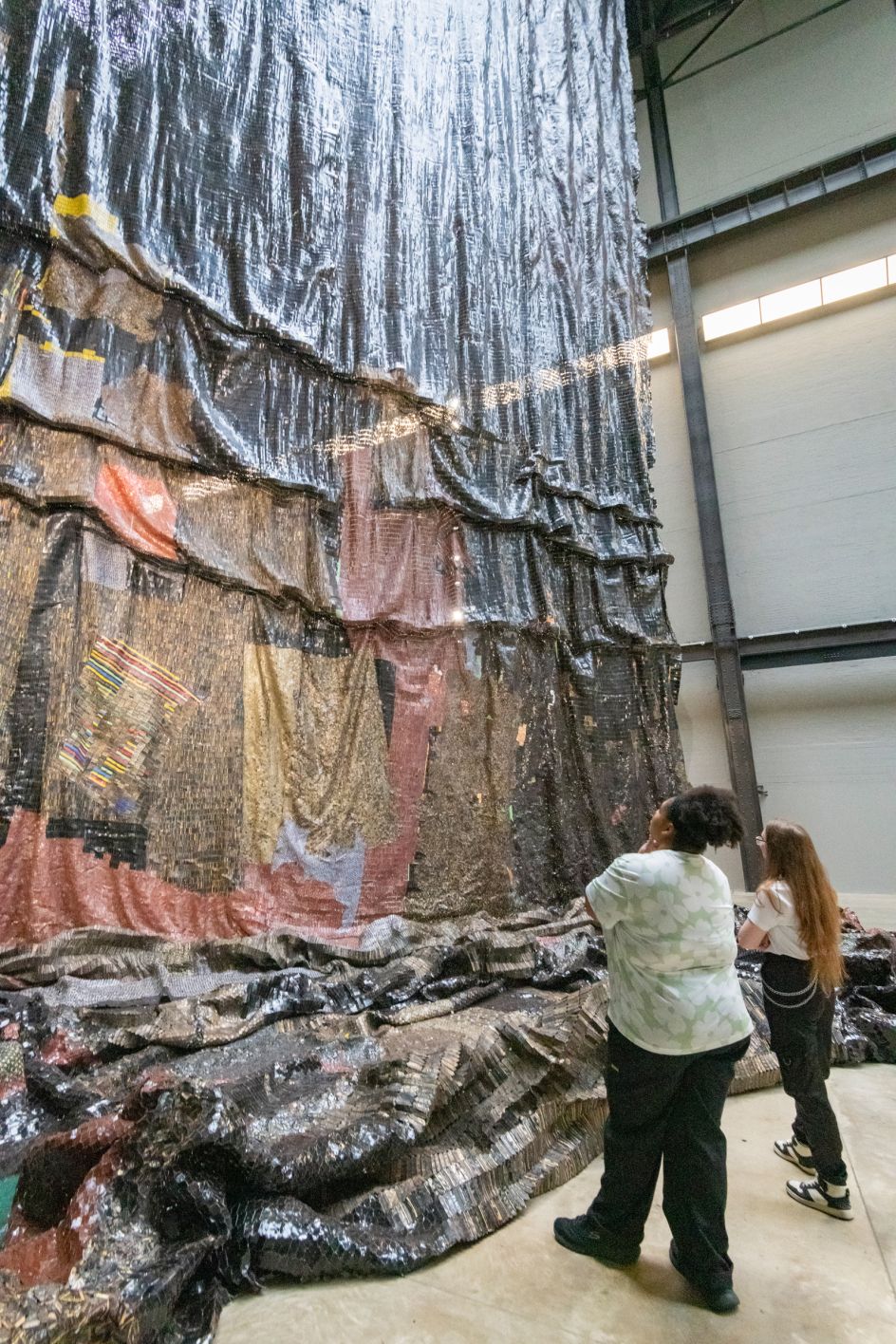
Hyundai Commission: El Anatsui: Behind the Red Moon , Installation View, Photo © Tate (Lucy Green)
Anatsui and a team of assistants have been creating hanging sculptures out of rubbish for decades. While those with deeper pockets can buy no less intricate but somewhat more domestic-sized works from the October Gallery, where a show of his work has been programmed concurrently, it is back to the Turbine Hall and its sheer size that makes these works so sensational.
On a human scale, they remind us of the imponderable number of people consuming products and the waste we accumulate. These curtains of printed foil weigh literal tonnes and metaphorically far more. To see anything in great numbers is uncanny. If served rice or couscous, we accept it as a bowl or plateful instead of individual grains, and with Anatsui's towering drapes, we are looking at multitudes. Think of the time and resources it has taken to produce all this material, then consume it, and finally, the effort to repurpose it in this way. The numbers defy counting, and with them, the work overwhelms.
Like much of Anatsui's work, the installation encapsulates themes of colonialism and trade routes. The sail 'The Red Moon' at the entrance of the Turbine Hall catches the winds of change. 'The Wall', the larger, longer piece towards the rear of the space, is dark at its face. It billows down onto the concrete, luxuriant in its volume, forming crashing waves and rock-like mounds. Around the back, the piece is like a waterfall of Klimt's The Kiss, all yellows, gold, red and shimmer. It is stunningly beautiful and demonstrative of so much that is wrong in the world.
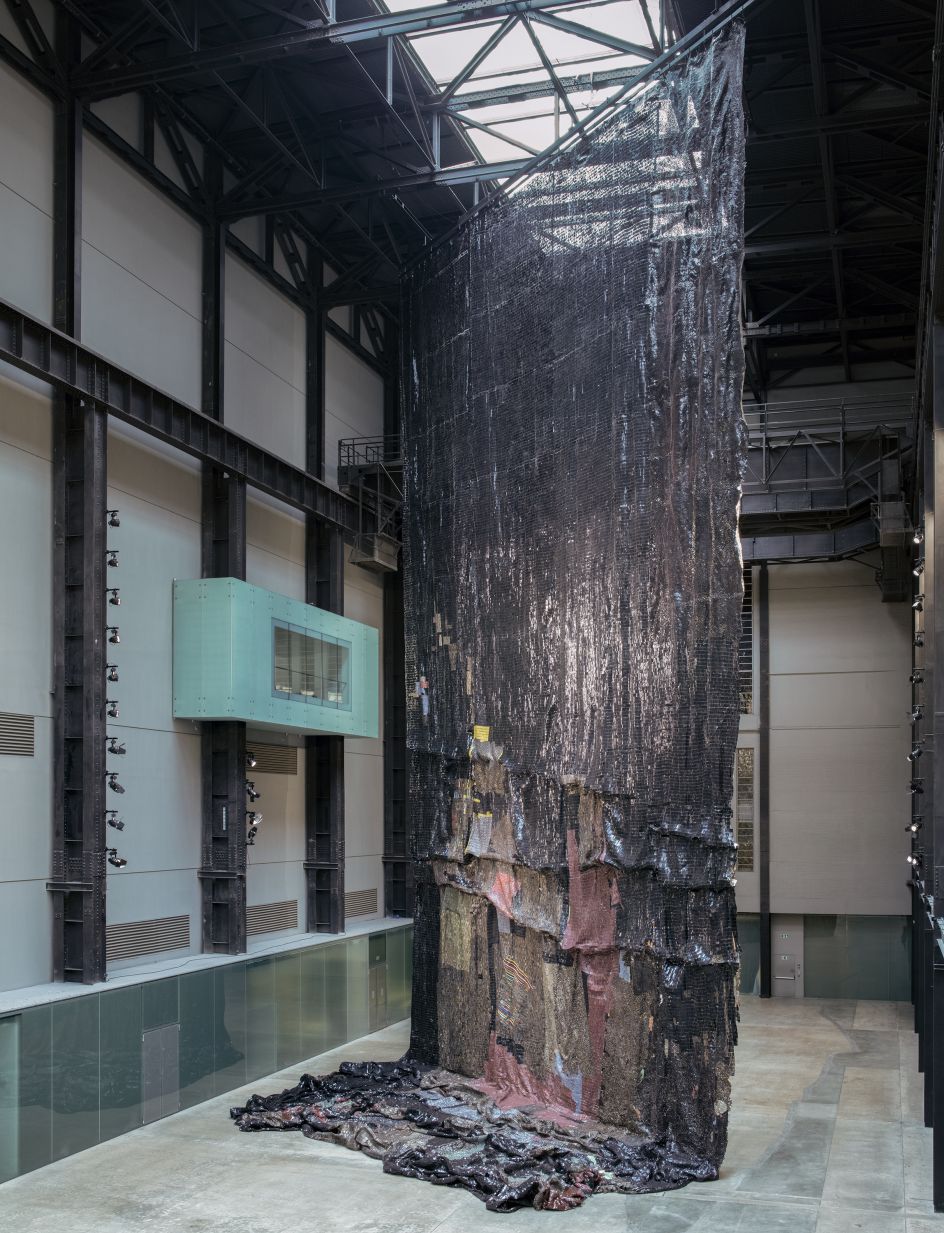
Hyundai Commission: El Anatsui: Behind the Red Moon , Installation View, Photo © Tate (Joe Humphrys)
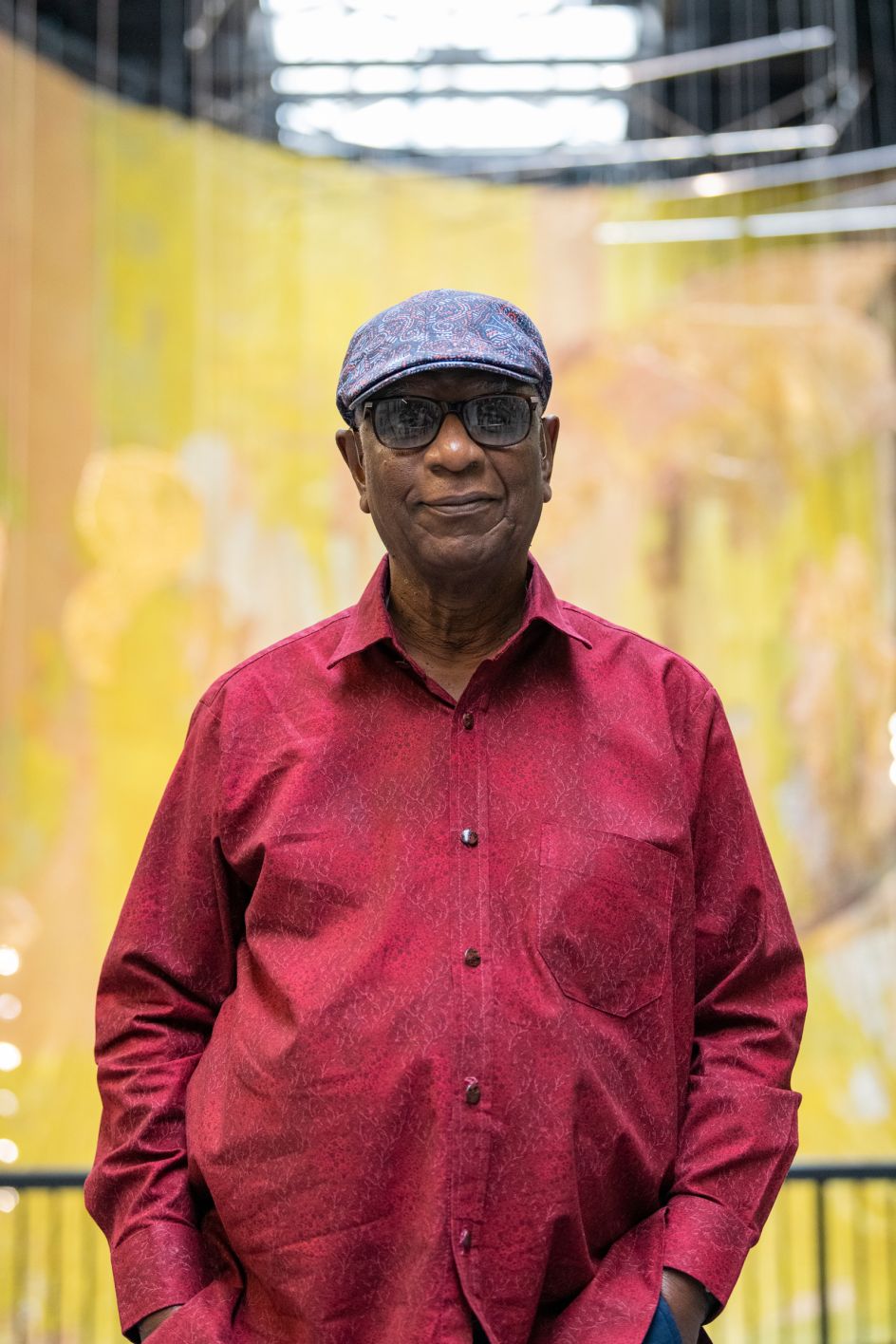
Hyundai Commission: El Anatsui: Behind the Red Moon , Installation View, Photo © Tate (Lucy Green)
Back when Tate Modern opened, The Bridge on Level 2 was intended to be a cut-through for people to come into the gallery, even if just passing by. The world changed with 9/11 and, with it, the carefree entry to the space. Looking at El Anatsui's extraordinary installation, despite its inarguable beauty, we are being warned that the world is not changing quickly enough, and the scale of our consumerist waste is a danger to us all.
Hyundai Commission: El Anatsui: Behind the Red Moon is at Tate Modern until 14 April 2024. To find out more, visit www.tate.org.uk.








](https://www.creativeboom.com/upload/articles/86/862919952c0ad18439004228895a431dc6e45ffc_732.jpg)
